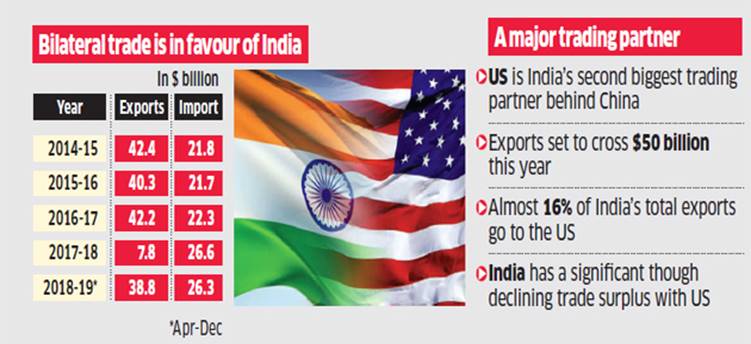Centre redefines child porn, moots stiff penalties under POCSO
News Important for: GS Paper – 1, 3 I Society, Welfare schemes for vulnerable sections of the population
Context
The Union cabinet approved the amendments in protection of children from sexual offences act, 2012.

Analysis
- It includes provision of death penalty in cases of sexual offences against children.
- The amendments also provide for levy of fines and imprisonment to curb child pornography.
- Amendments are also proposed to protect children from sexual offences in times of natural calamities and in other situations where children are administered, in any way, any hormone or any chemical substance, to attain early sexual maturity for the purpose of penetrative sexual assault.
- Any visual depiction of sexually explicit conduct involving a child which include photographs, video, digital or computer generated image indistinguishable from an actual child and an image created, adapted or modified but appear to depict a child will be subjected to imprisonment and fine.
- If a person stores such content for distributing it further, except for when presenting it in court as evidence, he could face a punishment of up to three years.
|
POCSO ACT
- The Protection of Children from Sexual Offences Act (POCSO Act) 2012 was formulated in order to effectively address sexual abuse and sexual exploitation of children.
- The new amendments are to make the laws against sexual offences of children more stringent.
|
Source link:
https://www.thehindu.com/news/national/government-redefines-child-porn-moots-stiff-penalties-under-pocso/article28391956.ece
Draft tenancy law caps security deposit
News Important for: GS Paper – 2 I Important aspects of governance, transparency and accountability
Context
The central government has approved the draft of model tenancy act, 2019 for state and union territories for renting premises.

About
- It includes setting a maximum of two months' rent as a security deposit, a three-month notice for hiking rent and appointment of rent authorities.
- A grievance redressal mechanism in the form of a Rent Authority, Rent Court and Rent Tribunal would be set up.
- Advance security deposit for residential properties would be capped at two months' rent and one months' rent for non-residential properties.
- No person shall let or take on rent any premises except by an agreement in writing.
- Within two months of executing the rental agreement both landowner and tenant are required to intimate to the Rent Authority about the agreement and within seven days a unique identification number will be issued by the Rent Authority to both the parties.
- If not covered under the tenancy agreement, a revision in rent would have to be communicated to the tenant three months in advance.
- The District Collector would appoint an officer of the rank of Deputy Collector and above to be the Rent Authority in the area.
Conclusion
- It will enable creation of adequate rental housing stock for various income segments of society including migrants, formal and informal sector workers, professionals, students etc. and increase access to quality rented accommodation, enable gradual formalisation of rental housing market.
Source link:
https://www.thehindu.com/news/national/draft-model-tenancy-law-proposes-cap-on-security-deposit-appointment-of-rent-authority/article28391984.ece
U.S., India to begin formal talks on trade today
News Important for: GS Paper – 2 I Effect of policies and politics of developed and developing countries
Context
India and the United States Trade Representatives will engage in another round of trade talks.

Analysis
- The talks will be focussed on several issues such as Indias’ e-commerce policies, data localisation.
- India’s high tariffs on U.S. products as motorcycles etc will be another major point to be discussed.
- India will point out the removal of GSP status from India and policies as CAASTA.
- Other major contentions as U.S.s’ objection to India opt out chinese company Huawei for its 5G trail etc.
|
An overview of U.S.-India Bilateral Trade and Investment
- In 2018, India GDP was an estimated $2.7 trillion (current market exchange rates); real GDP was up by an estimated 7.1%; and the population was 1.3 billion.
- India is currently our 9th largest goods trading partner with $87.5 billion in total (two way) goods trade during 2018.
- Trade in services with India (exports and imports) totalled an estimated $54.6 billion in 2018.
- According to the Department of Commerce, U.S. exports of Goods and Services to India supported an estimated 197 thousand jobs in 2015 (latest data available) (82 thousand supported by goods exports and 116 thousand supported by services exports).
|
Source link:
https://www.thehindu.com/news/national/us-india-to-begin-formal-talks-on-trade-on-july-12/article28391902.ece
‘Facial-recognition system will not violate privacy’
News Important for: GS Paper – 3 I Science and tech, Privacy,
Context
The National Crime Records Bureau is implementing Automatic Face Recognition System (AFRS) to identify criminals.

Analysis
- It is a component of Crime and Criminal Tracking Network and Systems (CCTNS).
- The data will only be accessible to law enforcement agencies.
- It will capture face images from CCTV feed and generate alerts if a blacklist match is found.
- The software will be used only in respect of persons who figure on the CCTNS data base as accused persons, prisoners, missing persons and unidentified found persons including children, and unidentified dead persons.
- It will not be used on any other database.
- This will ensure that criminals and terrorists will not be able to hide behind a fake identity by matching the previous records of the identified criminal.
Source link:
https://www.thehindu.com/news/national/facial-recognition-system-will-not-violate-privacy/article28391953.ece
Bill to relax green card cap passed
News Important for: GS Paper – 2 I Effect of policies and politics of developed and developing countries on India's interests, Indian Diaspora.
Context
The U.S. House of Representatives has passed the Fairness for High-Skilled Immigrants Act of 2019.
Analysis
- It act will increase the annual limit of family-based immigrant visas offered to citizens of each country and will eliminate the country-wise caps on employment-based immigrant visas.
- It will increase the per-country cap on family-based green cards from the current 7% to 15%.
- Few critics argue that these caps will allow only few countries to dominate employment opportunities in the U.S.
Impact on India
- India, China and the Philippines are the top country whose nationals get approved for immigrant visas.
- It will reduce the waiting time for visas to get converted into green card.
Source link:
https://www.thehindu.com/news/international/us-house-passes-bill-removing-country-cap-on-green-card/article28367126.ece
Jobless growth becomes more systemic
News Important for: GS Paper – 2 I Important aspects of governance, Issues relating to development and management of Education, Human Resources.
Context
The latest Periodic Labour Force Survey raise concerns about the jobless growth faced by India in this decade.

Key highlights of the report and its impact
- The labour force participation rate in 2012 was 55.5% which has been shrunk to 49.7% in 2018.
- There is an absolute decline in the number of workers participating in the labour force.
- The rise in overall unemployment has both locational and gender dimensions.
- The highest unemployment rate was among the urban women at 10.8%
- It was followed by urban men, rural men and rural women.
- The decline in urban women labour force participation is due to the access to employment and gender parity.
- There is a decline in women’s labour force participation from 31% to 24%.
- India is among the countries with the lowest participation of women in the labour force.
- Another major finding was that as unemployment rates go up as levels of education go up.
- It is higher for senior secondary level education than for senior secondary level education.
- Unemployment rate in educated urban women is the highest followed by educated urban men.
- The country’s inability to absorb the educated into gainful employment is an economic loss and a demoralising experience both for the unemployed and those enthusiastically enrolling themselves for higher education.
Conclusion
- The trend of jobless growth has taken a generalised shift from organised sector to other sectors of economy as well. It needs to be tackled carefully with reformed administrative spirit to benefit the demographic dividend of the country.
Source link:
https://www.thehindu.com/opinion/op-ed/jobless-growth-becomes-more-systemic/article28391822.ece









